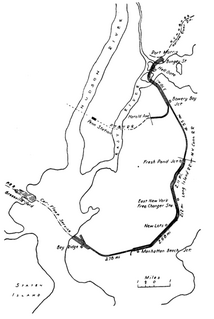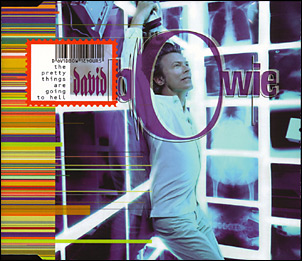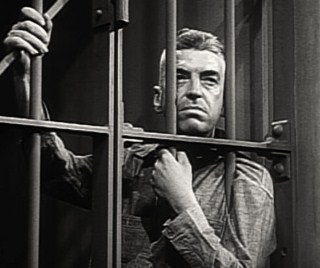Related Research Articles

The Hell Gate Bridge, originally the New York Connecting Railroad Bridge or the East River Arch Bridge, is a 1,017-foot (310 m) steel through arch railroad bridge in New York City. Originally built for four tracks, the bridge currently carries two tracks of Amtrak's Northeast Corridor and one freight track across the Hell Gate, a strait of the East River, between Astoria in Queens, and Randalls and Wards Islands in Manhattan.
The 13th (Western) Division was one of the Kitchener's Army divisions in the First World War, raised from volunteers by Lord Kitchener. It fought at Gallipoli, in Mesopotamia and Persia.

The 29th Division, known as the Incomparable Division, was an infantry division of the British Army, formed in early 1915 by combining various Regular Army units that had been acting as garrisons around the British Empire. Under the command of Major-General Aylmer Hunter-Weston, the division fought throughout the Gallipoli Campaign, including the original landing at Cape Helles. From 1916 to the end of the war the division fought on the Western Front in Belgium and France.

The New York Connecting Railroad or NYCR is a rail line in the borough of Queens in New York City. It links New York City and Long Island by rail directly to the North American mainland. Amtrak, CSX, Canadian Pacific Railway, Providence and Worcester Railroad and New York and Atlantic Railway (NYAR) currently use the line. It runs from the Hell Gate Bridge over the East River to Fresh Pond Junction yard in Glendale. It was completed in 1917. Amtrak uses the northernmost section of the line from Sunnyside Junction in the Woodside section of Queens to the Hell Gate Bridge into the Bronx from which it follows the line north to Boston.
"Texas Fight" is the official fight song of the University of Texas at Austin and was written by Colonel Walter S. Hunnicutt in collaboration with James E. King, then director of the Marlin High School Band.

Frank Edward Stubbs was an English recipient of the Victoria Cross, the highest and most prestigious award for gallantry in the face of the enemy that can be awarded to British and Commonwealth forces.
Edward L. Cahn was an American film director.

Charles K. French was an American film actor, screenwriter and director who appeared in more than 240 films between 1909 and 1945.

The Gates of Hell is a monumental sculptural group work by French artist Auguste Rodin that depicts a scene from the Inferno, the first section of Dante Alighieri's Divine Comedy. It stands at 6 metres high, 4 metres wide and 1 metre deep (19.7×13.1×3.3 ft) and contains 180 figures. The figures range from 15 centimetres (6 in) high up to more than one metre (3 ft). Several of the figures were also cast independently by Rodin.

"The Pretty Things Are Going to Hell" is a song written by David Bowie and Reeves Gabrels for the album Hours in 1999. The first single release from the album in Australia and Japan, while the rest of the world got "Thursday's Child" as their first single. The first appearance of the song was on the soundtrack of the film Stigmata in 1999. It charted and peaked at No. 30 in Japan. The song's title takes influence from the song "Your Pretty Face Is Going to Hell" by The Stooges from their album Raw Power produced by Bowie himself.

Tony Gaudio, A.S.C. was an Italian-American cinematographer and sometimes is cited as the first to have created a montage sequence for a film.

In religion and folklore, Hell is an afterlife location in which evil souls are subjected to punitive suffering, often torture, as eternal punishment after death. Religions with a linear divine history often depict hells as eternal destinations, the biggest examples of which are Christianity and Islam, whereas religions with reincarnation usually depict a hell as an intermediary period between incarnations, as is the case in the dharmic religions. Religions typically locate hell in another dimension or under Earth's surface. Other afterlife destinations include Heaven, Paradise, Purgatory, Limbo, and the underworld.

Alan Roscoe was an American film actor of the silent and early talking film eras. He appeared in 108 films between 1915 and 1933. His interment was located in Glendale's Forest Lawn Memorial Park Cemetery. He was married to Last of the Mohicans costar Barbara Bedford.

Frank Mayo was an American actor. He appeared in 310 films between 1911 and 1949. He was born in New York City and died in Laguna Beach, California, from a heart attack. He was married to actress Dagmar Godowsky from 1921 to 1928. The marriage was annulled in August 1928 on the ground that Mayo had another wife. Mayo was buried at the Forest Lawn, Hollywood Hills Cemetery in Los Angeles.
Harold Shumate was an American screenwriter. He wrote for 100 films between 1917 and 1954. He was born in Austin, Texas and died in Ventura County, California.

George Henry Irving was an American film actor and director.

The Hells Angels Motorcycle Club (HAMC) is a worldwide one-percenter motorcycle club whose members typically ride Harley-Davidson motorcycles. In the United States and Canada, the Hells Angels are incorporated as the Hells Angels Motorcycle Corporation. Common nicknames for the club are the "H.A.", "Red & White", "HAMC", and "81".
Enicodini is a tribe of longhorn beetles of the subfamily Lamiinae. It was described by Thomson in 1860.
Anomonotes annulipes is a species of beetle in the family Cerambycidae. It was described by Heller in 1917. It is known from New Caledonia.
Anomonotes leucomerus is a species of beetle in the family Cerambycidae. It was described by Heller in 1917. It is known from New Caledonia.
References
- ↑ Biolib.cz - Anomonotes. Retrieved on 8 September 2014.
| This Enicodini article is a stub. You can help Wikipedia by expanding it. |